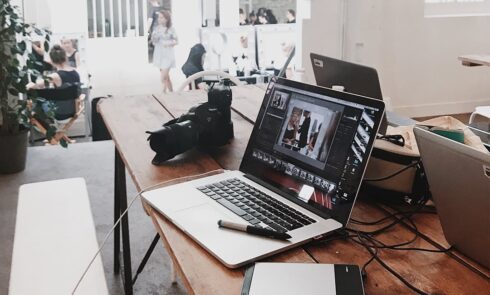There are many tools available for creating animations. In this case, the choice of graphics editor will depend on the type of graphics with which you plan to work.
So, bitmap images are formed by a set of pixels, each of which contains information about color. Its disadvantage can be called a large amount of memory, but it is raster graphics is used in the display of photorealistic pictures.
Vector graphics is based on reference points that are connected by mathematical curves. Its undoubted advantage should be considered a small amount of memory occupied by vector images, as well as the ability to scale them without loss of overall quality. Thus, vector image tools are the best tools for creating animation and cartoons.
Program Overview
Synfig Studio is a freeware software used to create vector animations. Using the program’s extensive features, users can create both standalone animations and cartoon movies.
Synfig was originally created as an internal working platform for Voria Studio. After its closure in 2005, the program became available to all users.
Features and capabilities
Speaking about the capabilities of the Synfig Studio program, first you need to refer to the special terminology.
Thus, animation in general terms should be understood as a quick display of separate images, which creates an illusion of motion on the screen. In this case, the creation of each frame takes a significant amount of effort and time of the artist, not to mention the high requirements for his professionalism.
With Synfig Studio can create animation without the need to physically draw many frames. For this purpose, the software uses special technologies.
- Overlay animation. Its essence is to divide one object into many constituent parts, with which the work is done by changing them (scaling, rotation, shape change). Synfig Studio provides a smooth transition between these actions. It should be noted that shifting animation can be created using both raster and vector images. Synfig Studio does not assume the possibility of creating a bitmap image on its base, but the user can import it to create an animation based on it using the technology of shifting animation;
- Morphing. The essence of morphing is to change the positions of the fixation points of the vector image, due to which the shape and position of the object can be changed. When using the program, such transitions seem imperceptible, due to which the illusion of movement or transition is created.
Having understood the basic principles of the software, it is worth noting its significant functions:
- Availability of tools for creating 2D images. Users can create images based on the software. For this purpose, Synfig Studio has many drawing tools: graphic filters, pencils, fills, gradients, brushes and so on. This is everything you need to create static digital images;
- Ability to use layers. Each layer is individually configurable, and the program allows you to simultaneously use up to 50 layers within one project. There is also a function of linking layers to each other, which provides a wide range of actions for working with a graphic object;
- Skeletal animation. Under skeletal animation should be understood as the use of an animated template, on which additional graphic elements are superimposed. It is used to create complex scenes. Synfig Studio allows you to choose both a ready-made template and use its capabilities to create your own;
- Finished movies can be exported in MPEG, AVI, Digital Video formats. Animations are saved in MNG and GIF formats.

